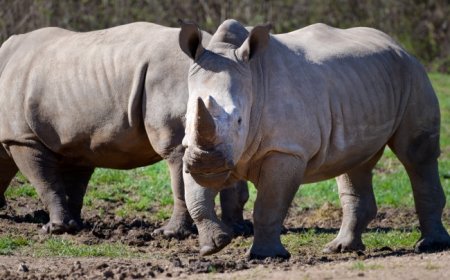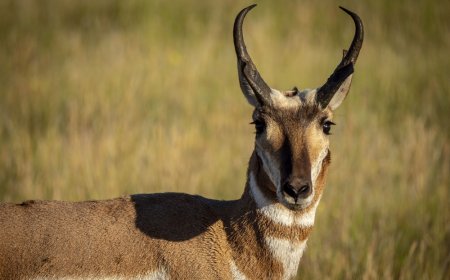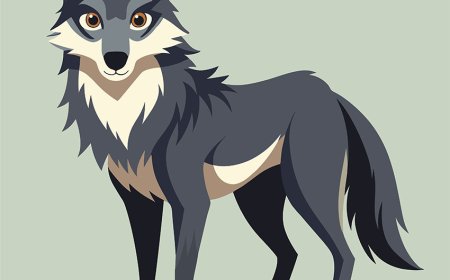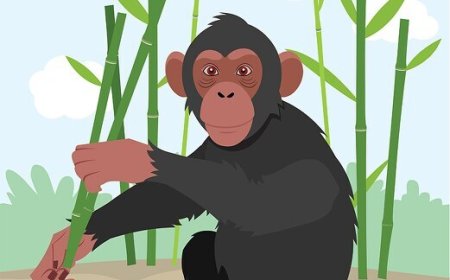All About Red Pandas for Students: Tree-Dwelling Bamboo Eaters of Asia
Explore the secretive life of the red panda in this full-length student article. Learn about their diet, behavior, habitat, and why they need protection. Includes vocabulary, quiz, and a kid-friendly summary
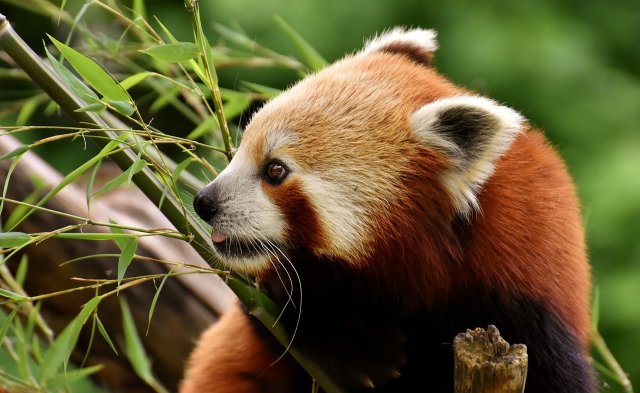
🐾 Red Pandas: Tree-Dwelling Bamboo Eaters of Asia
Red pandas are small, furry mammals known for their bright reddish coats, bushy ringed tails, and playful personalities. Although their name makes them sound like relatives of the giant panda, they actually belong to their own unique family. In fact, red pandas are not bears at all—they’re more closely related to raccoons, skunks, and weasels than to pandas or cats.
These elusive animals live high in the mountains of Himalayan forests and parts of China, Nepal, Bhutan, India, and Myanmar. They are mostly active at dawn and dusk and spend their lives climbing, foraging, and curling up in the trees. With fewer than 10,000 left in the wild, red pandas are endangered, and conservation efforts are vital for their survival.
🌍 Habitat and Geographic Range
Red pandas live in cool, temperate forests with dense bamboo undergrowth. These forests are located in the eastern Himalayas and southwestern China, typically at elevations between 6,000 and 13,000 feet. The air is thin, the climate is cool, and the landscape is steep and rocky—perfect for red pandas who prefer quiet, tree-covered areas.
They are arboreal, which means they spend most of their lives in trees. They use their sharp claws and rotating ankles to climb both up and down tree trunks, and their long, bushy tails help them balance on narrow branches. At night, they curl their tails around themselves like a blanket to stay warm.
Red pandas rely on undisturbed forests for safety, food, and nesting sites. Because their habitat is being destroyed for logging, farming, and development, their forest homes are shrinking fast.
🎋 Diet and Feeding Behavior
Red pandas have a plant-based diet, but what makes them especially unique is their strong preference for bamboo. Although bamboo is low in nutrients, it makes up over 90% of their diet. Red pandas eat the leaves and tender shoots, using their strong jaws and sharp teeth to chew through the tough stalks.
In addition to bamboo, red pandas eat:
- Berries and fruits
- Mushrooms and leaves
- Bird eggs, insects, and small rodents (occasionally, for protein)
Even though red pandas are classified as carnivores, they behave more like herbivores. They eat slowly and spend up to 13 hours a day foraging and resting. Their false thumb—an enlarged wrist bone—helps them grasp bamboo while eating, just like the giant panda.
Because bamboo is hard to digest, red pandas need to eat a lot of it and have a slow metabolism. They conserve energy by resting in tree hollows or lying on branches during the day.
👥 Behavior and Social Life
Red pandas are generally solitary animals, meaning they like to live alone except during mating season or when a mother is raising cubs. Each red panda maintains a territory, which it marks using scent glands located on the soles of its feet and at the base of its tail. These scent markers help avoid accidental run-ins with other pandas.
They are crepuscular, which means they are most active at dawn and dusk. During these hours, they climb through trees in search of bamboo and other food sources. Red pandas use a variety of vocal sounds to communicate, including squeaks, huffs, growls, and whistles.
Although not as socially complex as monkeys or chimpanzees, red pandas show signs of playful behavior, especially as young cubs. They roll, wrestle, chase, and climb together before becoming more independent as they grow.
🍼 Life Cycle and Reproduction
Red pandas mate in the late winter months, between January and March. After a pregnancy of about 130 days, the female gives birth in the summer, usually to 1–4 cubs, though 1 or 2 is most common. She gives birth in a hidden nest inside a tree hollow or dense shrubbery.
Newborn cubs are born blind, deaf, and helpless. They are covered in soft gray fur and remain in the nest for about 3 months. During this time, the mother is extremely protective and may move her cubs between several nests to keep them safe.
At about 4–5 months old, cubs begin to explore their surroundings and climb trees. They stay with their mother through the winter and become independent after about 1 year. Red pandas can live up to 10–12 years in the wild, and even longer in zoos.
🧠 Adaptations and Physical Features
Red pandas are perfectly designed for life in the forest. Their reddish-brown fur helps them blend into the moss and tree bark, while their black legs and white face markings provide excellent camouflage in dappled light. Their thick fur, including on the soles of their feet, helps them stay warm in cold mountain climates.
They have strong, curved claws for climbing and semi-retractable claws like a cat’s. Their ankle joints can rotate, allowing them to climb down trees headfirst—a rare skill among mammals.
Their false thumb is an important adaptation that helps them grip bamboo stalks while eating. Combined with their sharp senses of smell and hearing, these traits help red pandas survive in a competitive forest environment.
⚠️ Threats and Conservation
Red pandas face many threats, and today they are considered endangered by the International Union for Conservation of Nature (IUCN). Their wild population is estimated to be fewer than 10,000 individuals, and the number is still dropping.
🚨 Major threats include:
- Habitat loss from logging, farming, and human development
- Poaching, often for fur or illegal pet trade
- Fragmentation of forests, which traps pandas in small, isolated areas
- Diseases from domestic dogs and livestock
- Climate change, which affects bamboo growth and availability
🛡️ Conservation efforts:
- Creating protected forest reserves in red panda range countries
- Reforestation and bamboo planting to rebuild habitats
- Anti-poaching patrols and law enforcement
- Community education programs to reduce hunting
- Support from organizations like the Red Panda Network
Zoos around the world also participate in breeding programs to protect red panda genetics and raise awareness.
🎉 Fun Facts About Red Pandas
- Red pandas are sometimes called “firefoxes”, which inspired the web browser name
- Their scientific name, Ailurus fulgens, means “shining cat”
- Red pandas were discovered before the giant panda
- They can sleep with their tails over their faces like a blanket
- Red pandas are the official state animal of Sikkim, India
🧠 Vocabulary List
Arboreal – Living in trees
Endangered – At risk of disappearing forever
Crepuscular – Most active during dawn and dusk
Camouflage – Coloring or patterns that help animals blend into their environment
Territory – The area an animal lives in and defends
False thumb – A wrist bone used like a thumb for gripping
Metabolism – How quickly an animal’s body uses energy
Poaching – Illegal hunting or capturing of wild animals
Conservation – Protecting nature and wildlife
Fragmentation – Breaking a habitat into smaller pieces, making survival harder
🧒 Kid-Friendly Summary
Red pandas are small, fluffy animals that live in cool forests of Asia. They love to eat bamboo, climb trees, and nap on branches. They are great climbers and even have a special thumb that helps them hold their food. Red pandas are shy and quiet, and they usually live alone.
Sadly, red pandas are endangered because people are cutting down their forests and hunting them. But many people and organizations are working to keep red pandas safe so they can live happily in the wild for years to come!


















































